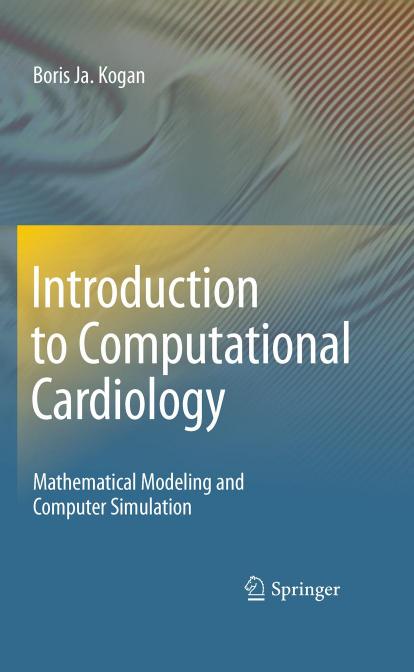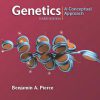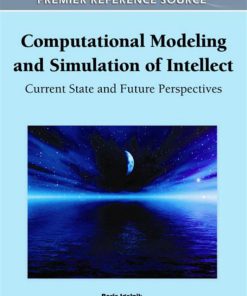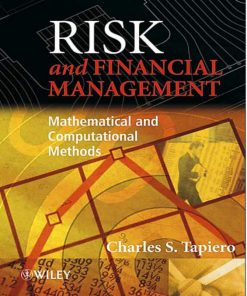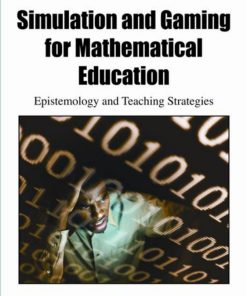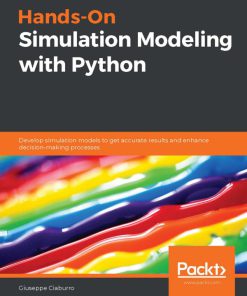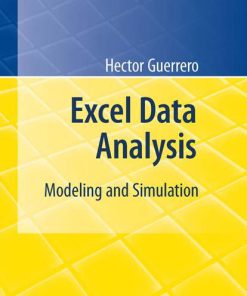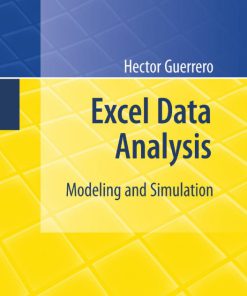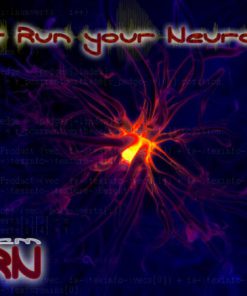Introduction to Computational Cardiology Mathematical Modeling and Computer Simulation 1st Edition by Boris Ja Kogan ISBN 0387766863 9780387766867
$50.00 Original price was: $50.00.$25.00Current price is: $25.00.
Authors:978-0-387-76685-0 , Author sort:978-0-387-76685-0 , Languages:Languages:eng , Published:Published:Dec 2009
Introduction to Computational Cardiology Mathematical Modeling and Computer Simulation 1st Edition by Boris Ja Kogan – Ebook PDF Instant Download/Delivery. 0387766863, 9780387766867
Full download Introduction to Computational Cardiology Mathematical Modeling and Computer Simulation 1st Edition after payment
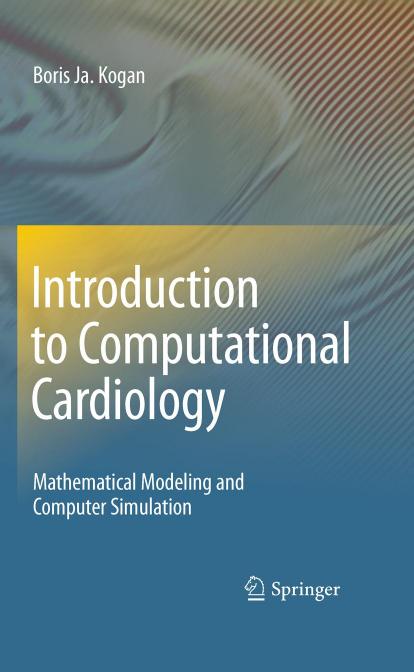
Product details:
ISBN 10: 0387766863
ISBN 13: 9780387766867
Author: Boris Ja Kogan
Introduction to Computational Cardiology provides a comprehensive, in-depth treatment of the fundamental concepts and research challenges involved in the mathematical modeling and computer simulation of dynamical processes in the heart, under normal and pathological conditions. About this textbook: – Presents descriptions of models used in both biology and medicine for discovering the mechanisms of heart function and dysfunction on several physiological scales across different species. – Provides several examples throughout the textbook and exercises at the end which facilitate understanding of basic concepts and introduces, for implementation, treated problems to parallel supercomputers. Introduction to Computational Cardiology serves as a secondary textbook or reference book for advanced-level students in computer science, electrical engineering, biomedical engineering, and cardiac electrophysiology. It is also suitable for researchers employing mathematical modeling and computer simulations of biomedical problems.
Introduction to Computational Cardiology Mathematical Modeling and Computer Simulation 1st Table of contents:
Chapter 1. Introduction
1.1. Heart as a four-chamber pump
1.1.1. Heart function
1.1.2. Heart structure
1.1.3. Blood supply of the heart-coronary system
1.1.4. Heart Automaticity
1.2. Heart systems
1.3. Control of Heart Contractility
1.3.1. Excitation-contraction coupling
1.4. Heart Fibrillation and Sudden Cardiac Death
1.5. The methods for investigation of heart processes
1.6. Role of mathematical modeling and computer simulation in investigating the heart processes
1.7. References
156898_1_En_2_Chapter_OnlinePDF.pdf
Chapter 2. Mathematical Modeling and Computer Simulation
2.1. Mathematical modeling
2.1.1. Deductive, inductive and combined mathematical models
2.1.2. General assumptions used in mathematical modeling
2.1.3. Mathematical Models of direct analogy
2.1.4. Relaxation oscillations
2.1.5. Validation of mathematical models
2.2. Appendix: Lilly-Bonhoeffer Iron Wire Model
2.3. References
156898_1_En_3_Chapter_OnlinePDF.pdf
Chapter 3. Electrophysiological and Electrochemical Background
3.1. Cardiac cell and cardiac muscle structures
3.1.1. Intercalated disc
3.1.2. Myofibrils
3.1.3. Cell membrane
3.2. The basic laws and equations
3.3. Currents through a cell membrane
3.3.1. Capacitive current
3.3.2. Ionic currents trough channels gated by membrane potential
3.4. Action potential mathematical models
3.4.1. Action Potential and corresponding definitions.
3.4.2. Cell’s passive properties
3.5. Types of Cardiac Cells
3.6. References
156898_1_En_4_Chapter_OnlinePDF.pdf
Chapter 4. Mathematical Models of Action Potential
4.1. Hodgkin-Huxley Model for Axonal Membrane
4.2. Classification of Ionic Action Potential Models
4.3. First Generation Cardiac Action Potential Models
4.3.1. Noble Model of the Purkinje Fiber Action Potential
4.4. Second Generation Cardiac Action Potential Models
4.4.1. Short Overview of Second Generation AP Models
4.4.2. The Luo and Rudy AP Model (LR2)
4.4.3. The Jafri et al AP Model
4.4.4. The Chudin AP Model
4.5. Further Developments of AP Models
4.6. Clamp Experiment Techniques
4.6.1. Separation of Na and K Currents
4.7. Recovery of Excitation at Normal and High Rates of Stimulation
4.8. Appendix: Description of AP Models with Ca2+ Dynamics
4.9. References
156898_1_En_5_Chapter_OnlinePDF.pdf
Chapter 5. Simplified Action Potential Models
5.1. Simplification of AP models using perturbation theory
5.2. Simplification using clamp-experiment data
5.3. From Van Der Pol to FitzHugh-Nagumo simplified model
5.3.1. Preliminary considerations
5.3.2. State variable representation
5.3.3. Phase-plane approach
5.3.4. Relaxation Oscillations
5.3.5. Phase-Plane approach for analysis of V-P equation.
5.3.6. FitzHugh modification of VP equations
5.3.7. Nagumo analog model based on nonlinear properties of tunnel diode
5.3.8. Simplification of FitzHugh-Nagumo equations for heart muscle cell
5.4. Comparative analysis of the second order simplified AP models
5.4.1. General comments
5.4.2. FitzHugh-Nagumo model
5.4.3. Van Capelle-Durrer model
5.4.4. Karma model
5.5. Conclusion
5.6. References
156898_1_En_6_Chapter_OnlinePDF.pdf
Chapter 6. Computer Implementation of Mathematical Models
6.1. Numerical methods for solving ordinary differential equations
6.1.1. Methods Based on Taylor Series Representation
6.1.2. Euler’s Method
6.1.3. Second Order Runge-Kutta (RK2) Method
6.2. Numerical solution of a system of ordinary differential equation
6.2.1. Euler’s Method:
6.2.2. RK2 Method
6.2.3. The Ashour-Hanna Method
6.2.4. The Hybrid Integration Method
6.3. Model Implementation on Parallel Supercomputers
6.3.1. Mathematical Model for AP Generation and Propagation (Generalized Form)
6.3.2. Implementation on Parallel Computers
6.4. Dimensionless Form of Equations for Wave Propagation
6.5. Determination of Wave Front Velocity in a 2D Model of Tissue
6.6. Appendix: Stability Conditions for Parabolic Partial Differential Equation (PDE) Solutions
6.7. References
156898_1_En_7_Chapter_OnlinePDF.pdf
Chapter 7. Excitation-Propagation in One Dimensional Fibers
7.1. Characteristics of excitation-propagation in a fiber
7.1.1. The cable theory
7.1.2. Passive propagation
7.1.3. Active propagation (mono-domain approach)
7.2. Bidomain approach
7.2.1. Velocity of propagation, q
7.3. Excitation propagation in 1D fiber model
7.3.1. Propagation of the solitary pulse along a 1D fiber
7.4. Propagation of pulse sequences
7.5. Propagation of excitation wave in model of a ring-shaped tissue
7.5.1. Initiation of pulse propagation in a ring-shaped tissue
7.5.2. Ring model formation and changing it length in course of computer simulation
7.5.3. Graphical approach
7.6. Analytical approach
7.7. APD and velocity restitution in a ring-shaped model
7.8. Propagation instability in ring-shaped tissue with Ca²+ dynamics
7.9. References
156898_1_En_8_Chapter_OnlinePDF.pdf
Chapter 8. Waves in Two Dimensional Models of Myocardium
8.1. Heart muscle as a 2D and 3D syncytium
8.1.1. Anisotropy of the tissue
8.2. Bidomain representation of 2D tissue
8.3. Heart muscle as a system of parallel interconnected cables
8.4. Propagation of rectilinear front
8.5. Propagation of wave with curvilinear front
8.5.1. Circular wave as an example of wavefront with equal curvature, K, in each point on the wavefr
8.6. Approaches for Spiral Wave Initiation in Computer Simulations
8.7. Stationary and non-stationary spiral waves
8.8. Curvature and Dispersion Relations
8.8.1. Curvature equation
8.8.2. Dispersion Relation
8.8.3. The effect of diffusion coefficient
8.8.4. Direct computer simulation approach to find the curvature relation
8.9. Appendix: 2D Myocardium Modeled as Interconnected Cables
8.10. References
156898_1_En_9_Chapter_OnlinePDF.pdf
Chapter 9. Theory and Simulation of Stationary Wave Propagation
9.1. Kinematics of Stationary Spiral Wave Propagation
9.1.1. Natural Equations and the Morphology of a Stationary Spiral Wavefront
9.1.2. Estimates of the Stationary Spiral Wave Angular Velocity � and the Radius rq
9.2. Propagation in Restricted Myocardium
9.3. Propagation in Unrestricted Myocardium with a Central Hole
9.4. Propagation in 2D Myocardium with Simplified AP Models
9.4.1. General Considerations
9.4.2. Simulations Using the FitzHugh-Nagumo Model
9.4.3. Simulations Using the Van Capelle and Durrer Model
9.5. Propagation in 2D Myocardium with 2nd Generation AP Models
9.5.1. General Considerations
9.5.2. Simulations Using the LR2 AP Model
9.5.3. Simulations Using the Chudin AP Model
9.6. Appendix: Derivation of Curvature for a Spiral Wave
9.7. References
156898_1_En_10_Chapter_OnlinePDF.pdf
Chapter 10. Excitation Wave Propagation in Narrow Passes
10.1. Introduction
10.2. Theoretical Considerations
10.3. Propagation Inside Narrow Pathways
10.3.1. Propagation Inside Narrow Pathways with Parallel Borders
10.3.2. Propagation Inside Narrow Pathways with Combinations ofParallel and Tapered Borders
10.3.3. Propagation Through Tapered Pathways
10.3.4. Initiation of Reentry
10.4. Computer Simulation Results
10.4.1. Transient Phenomena at the Entrance and Exit of Narrow Pathways
10.4.2. Reentrant Propagation in a Myocardium Model with Narrow Pathways
10.4.3. Narrow Pathways with a Large Current Sink
10.5. Discussion
10.6. Conclusion
10.7. References
People also search for Introduction to Computational Cardiology Mathematical Modeling and Computer Simulation 1st:
introduction to computational cardiology
introduction to cardiology
computational cardiology
introduction to computational methods
introduction to cardiothoracic surgery
You may also like…
eBook PDF
Simulation and Gaming for Mathematical Education 1st edition by Angela Piu 1605669318 9781605669311

